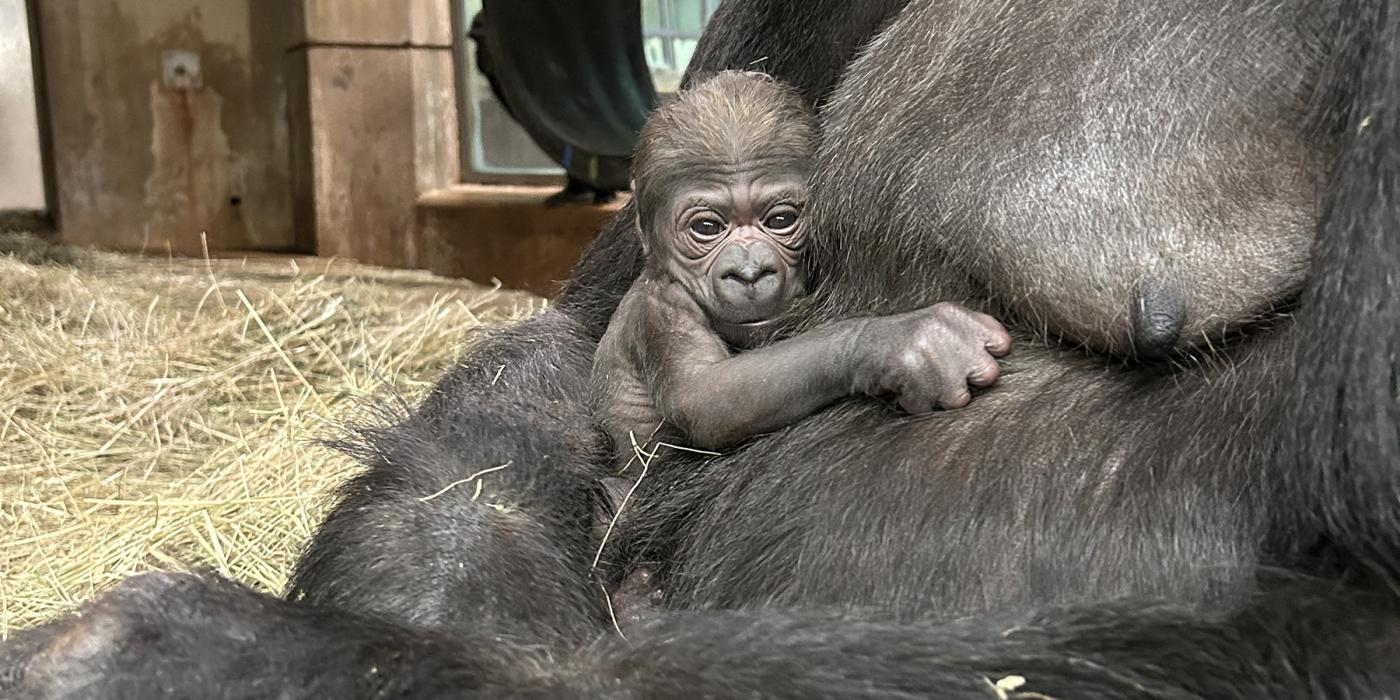#OrangutanStory: Redd Finds His Voice
What sounds does an infant orangutan make? Primate keeper Erin Stromberg filmed the Smithsonian’s National Zoo’s 2-year-old Bornean orangutan Redd as he pleaded with his mother to share her food. Get the scoop on this and his latest milestones in this Q&A with Stromberg.
Why is Redd vocalizing towards Batang?
Whenever Redd wants something—an enrichment item or a piece of food—he will make a whimpering sound. The octave changes based on his mood and desire. When he is asking his mother, Batang, for food nicely, he will do so at a lower octave. But, when he is overtired or he is not able to do what he wants, the vocalizations become high-pitched and intense. The vocalization in this video indicates that Redd is annoyed—his mom has food and he wants her to know his displeasure at her unwillingness to share. Batang will often hand him food, but if she wants it, she is going to keep it.
How is Redd and Batang’s relationship evolving?
Batang continues to be a wonderful and attentive mom to Redd. She is by his side all the time. They are the best of playmates and continue to build a very strong bond. That is not to say, though, that Batang does not appreciate some downtime. Redd rarely rests during the day anymore. He is always on the go! When Batang needs a break, she is more than willing to let Bonnie, Iris and Lucy take a crack at babysitting.
Redd spends the majority of playtime wrestling. With the adults, he will pull on their hair or bite them in a playful manner. Out of the four female orangutans, Lucy spends the least amount of time with Redd because she chooses not to travel the O-Line to Think Tank. However, when they are outside together in the yard, Lucy will lay down in front of Redd, encouraging him to climb all over her. She makes a great playmate!
Bonnie, Iris and Lucy are more willing to share their enrichment items with Redd, including puzzle feeders that contain favorite treats like popcorn or seeds. They will even give Redd little tastes of food from their mouths. Batang shares enrichment treats with Redd, too, but it depends on her mood. At times, she is willing to share, and at other times, she is not.
Does Redd play with Kyle or Kiko?
Redd shows a lot of interest in playing with his father, Kyle, and our other adult male, Kiko. Although both males have always acted appropriately around Redd, Batang is still quite cautious around them and will hold onto Redd a little tighter when they are around.
But, that doesn’t stop Redd from interacting with them. If he reaches out toward Kyle or Kiko, they will reach toward him as well. Sometimes, they will hold hands, albeit briefly!
Depending on Batang’s mood, she may let Redd explore while the adults are foraging, but she is always ready to grab hold of his arm or leg at any moment. As Redd becomes more independent, he will have more ‘say’ in whether he interacts with our adult males. For now, mom is still very much in charge of his social life.
Has Redd learned any new behaviors through training sessions?
Over the past couple of months, Redd has learned how to present his back and nose to us on cue, and we have just introduced belly presentation into his training repertoire. His attention span is still very short, so we try to capture as many behaviors as we can while he shows interest. However, at this age, Redd mostly watches Batang’s training sessions. His curiosity can sometimes interrupt her training sessions, so we try to have one keeper focus on him while another works with Batang. Redd does not mirror her movements, but he will show us different parts of his body. To help him learn, we will say the name of the part he shows and do the corresponding hand signal. I can see that he is making the connection between doing these behaviors and receiving attention from us.
What is your favorite part of working with Redd?
It is really exciting to watch him discover things, like new toys, and figure out how to play with them. One day, I was cleaning the enclosure with a hose, and he came towards the stream and began splashing in it. Moments like this help build that trusting relationship between Redd and us that is critical for future husbandry training down the road.
Even something as simple as watching Redd cross the O-Line, which can be a little daunting, really makes me realize how much his confidence is growing and how he becomes a little more independent every day. He is close to making it across an entire span—from tower to tower—all by himself. Sometimes while he is crossing, he will spin around on one hand. It is fun for him, no doubt, but quite scary for us! Luckily, Batang is never too far away to help him across.
This story was featured in the November 2018 issue of National Zoo News.
Related Species:




